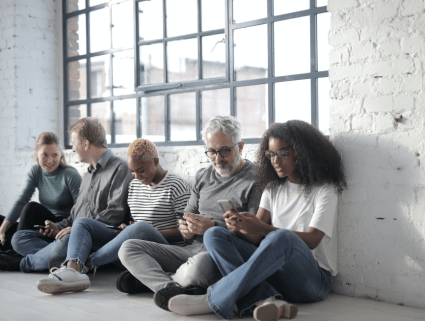Ecommerce personalization is all about delivering an individualized customer experience for each visitor to your website.
Marketers now have access to a wealth of customer data about shoppers’ preferences, lifecycle stage, location and more. This can be used to show each customer the most relevant content, precisely when they need it.
Common methods of website personalization include product recommendations, personalized images, location-based offers, and content based on individual behavior. These tactics keep your customers (and your boss!) happy by helping shoppers make faster, smarter decisions.
To get the most out of your website personalization strategy, it’s crucial that shoppers receive a one-to-one experience every time they interact with your company. Often, that starts with the homepage.
Keep reading for 14 homepage personalization examples from across the web to help you:
- Reassure and convert new customers
- Turn first-time visitors into subscribers
- Help returning visitors find what they’re looking for
- Retain and re-engage existing customers
1. Reassure and convert new customers
Your website is the go-to source of information about your brand and products. Make the most of this opportunity by building trust and helping visitors find what they’re looking for.
Build trust with social proof
Research shows that more than one in three consumers won’t purchase if an online store doesn’t show product ratings and reviews.
Vision Direct builds trust with new shoppers immediately and reduces the risk of high bounce rate by displaying their store rating on the homepage alongside customer reviews.
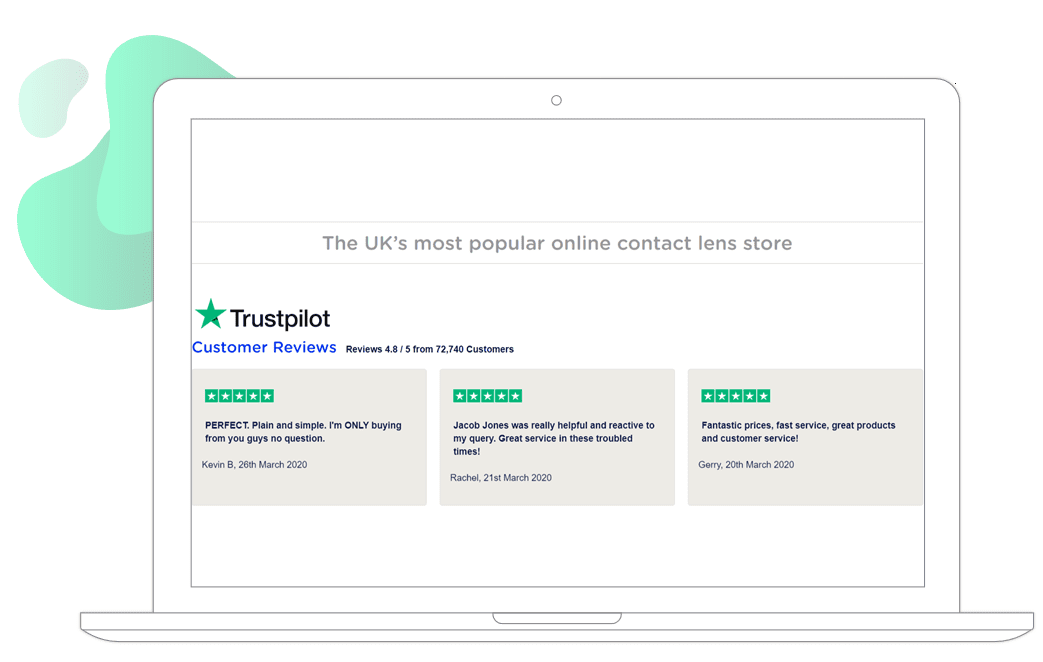
Source: visiondirect.co.uk
Inspire with social media
New customers might be unsure of what they can expect from your brand. Use social media feeds to help shoppers imagine how they will feel once they own one of your products as part of your eCommerce personalization strategies.
Even if a visitor isn’t ready to make a purchase, they could be inspired to micro-convert by following your social media channels.
This is a great way to show how your products look in real-life situations.
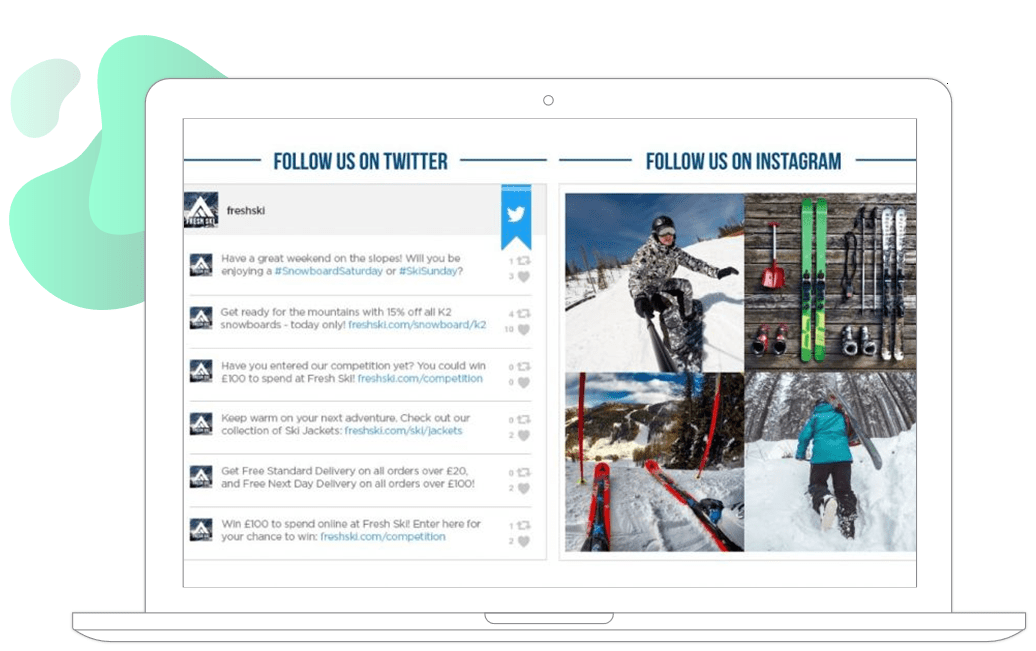
Help new visitors find products
When someone comes to your site for the first time, you won’t be able to use their past behavior to gauge their interests. This doesn’t mean you can’t show relevant product recommendations.
Consider using crowdsourced “best-sellers” to show the products your customers tend to be interested in. Including best-sellers on the homepage and category pages can be particularly effective eCommerce personalization, as without the ability to touch and see products in the flesh, new customers are more likely to be swayed by other shoppers’ opinions.
Victorian Plumbing combines high-converting social proof and product recommendation tactics to inspire website visitors to check out their popular items.
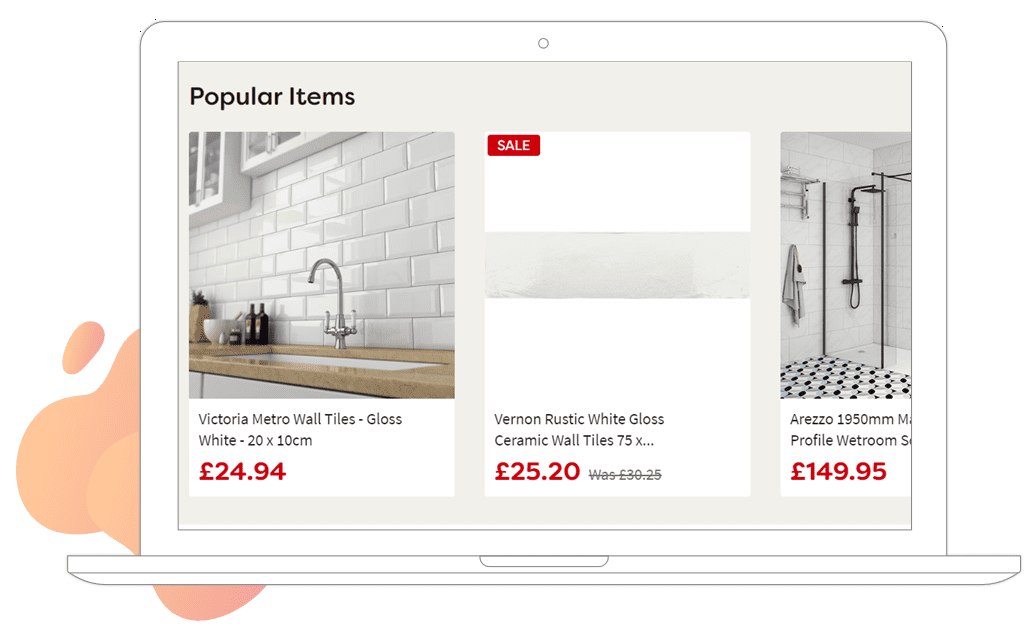
Source: victorianplumbing.co.uk
Learn more: 8 product recommendation examples for every stage of the customer journey
Even if you don’t have all the data about a customer’s individual interests, you can leverage information on contextual data, such as the shopper’s location. Depending on the nature of your products, you can show product recommendations relevant to the region, season or weather where the customer is shopping.
Surfdome uses a bright orange banner on the homepage to promote the release of their winter gear, as well as highlighting their range of winter wetsuits and ski products on their eCommerce website.
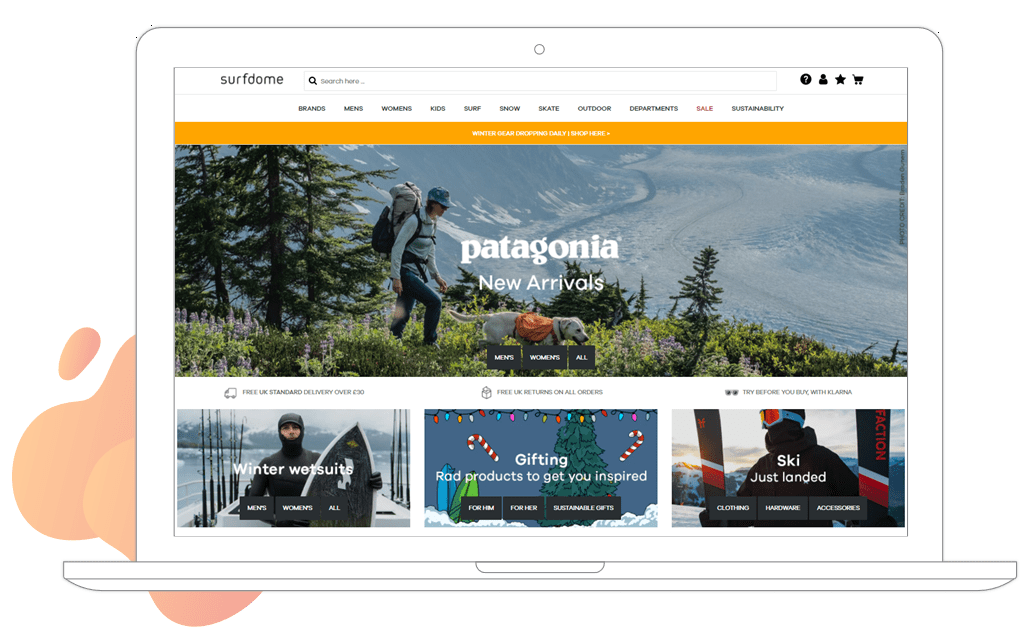
Source: surfdome.co.uk
Learn more: 3 surprising ways to drive sales using location
Killstar recommends products based on the visitor’s real-time activity, suggesting products for males or females depending on what the shopper has browsed. This allows Killstar to keep new shoppers engaged by showing them products that are most likely to spark their interest, despite not having any historical purchase data.
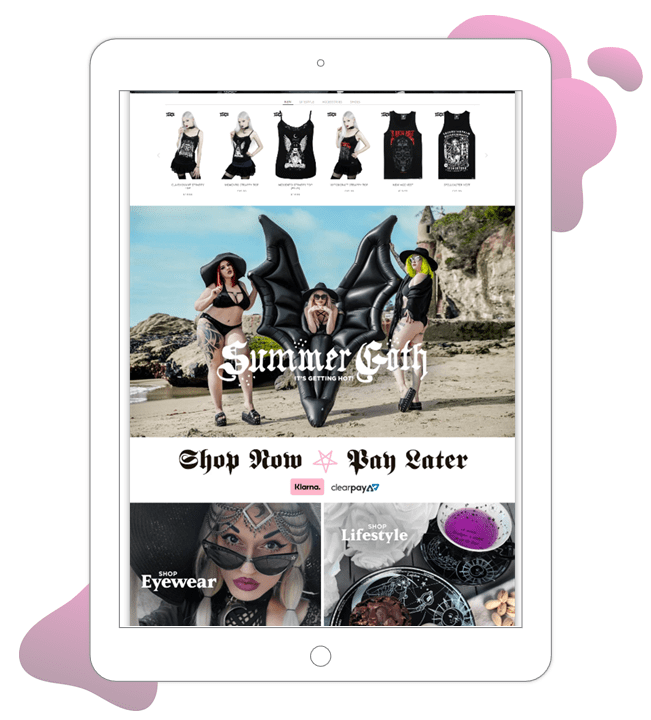
Source: Killstar.com
Recommending new arrivals is especially effective in sectors driven by fast-moving trends, such as fashion and beauty. By giving top billing to their new arrivals on the homepage banner, Surfdome builds excitement around the shopping experience and plays to our built-in expectation that something new must be better than what came before.
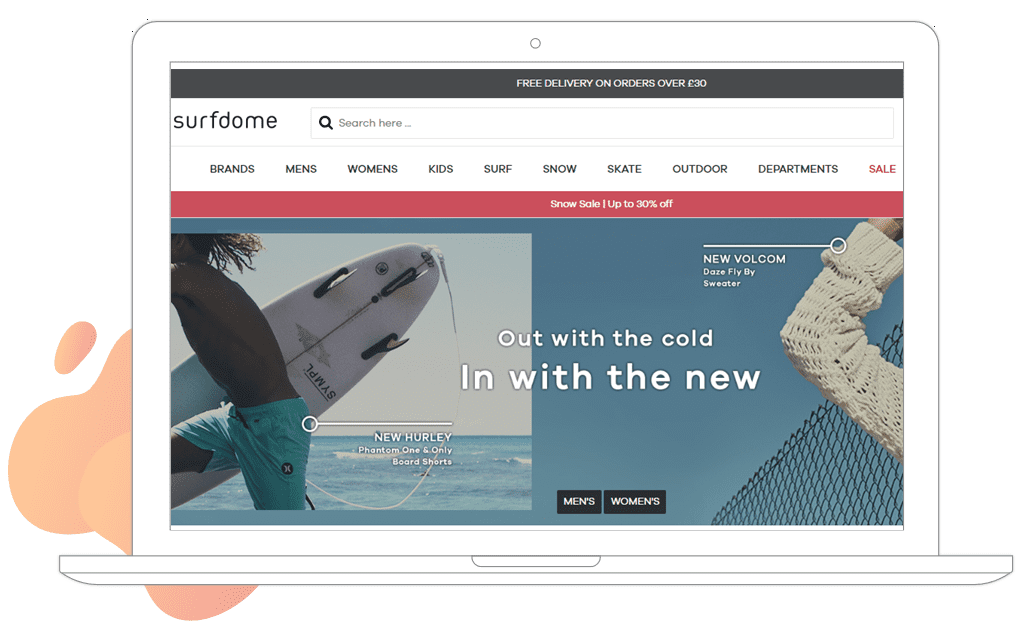
Source: surfdome.co.uk
2. Turn one-time visitors into subscribers
Special offers are a great way to incentivize first-time shoppers to stay on your site, instead of jumping to a competitor.
Offers also help you identify shoppers via their email address. Once someone has registered, you can maintain a valuable relationship and increase customer engagement by sending newsletters and triggered emails as part of your personalization efforts– for instance, cart and browse abandonment emails.
The data capture form can be placed within the web page, or appear as a popover or slider.
Feel Good Contacts uses targeted data capture popovers to deliver different messages to different customers as part of their personalized content. New customers are presented with a popover offering 10% off their first purchase, while students are informed about the company’s student discount. By showing website visitors the most relevant deals, Feel Good Contacts encourages more email sign-ups. The popover also comes in two versions – a small banner that expands on click and an exit-intent banner across the whole page. This tactic has paid off for Feel Good Contacts, as they’ve seen a 333% increase in sign-ups month-over-month.
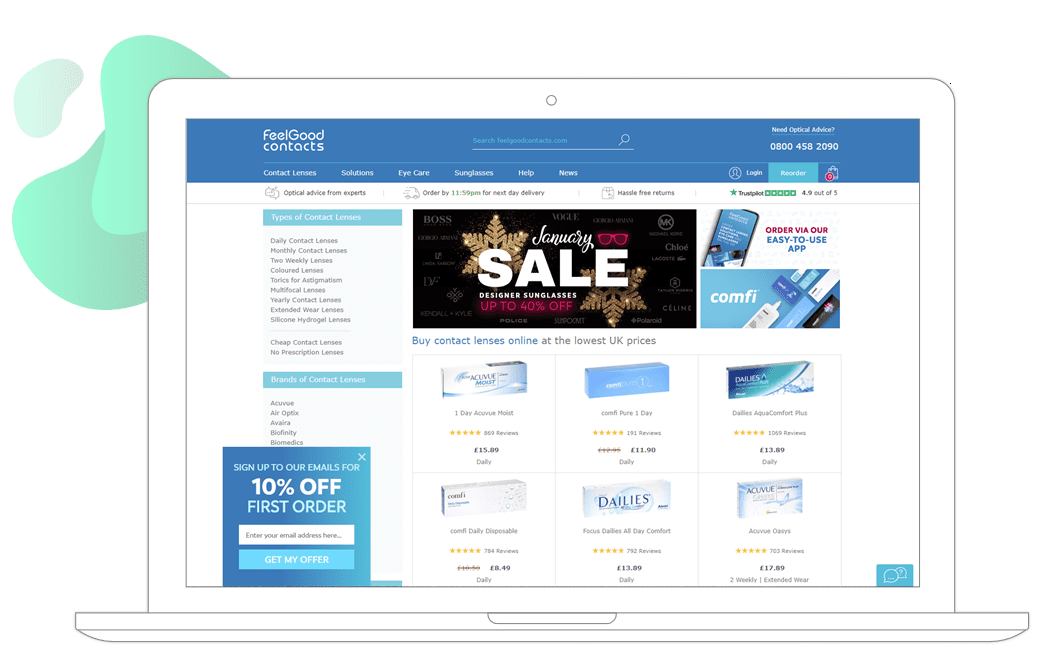
Source: feelgoodcontacts.com
Test the timing and content of pop-ups to find out what works for your visitors. If you’re using a full-page pop-up, make sure visitors have enough time to view your content before asking them to sign up.
Learn more: How to create popovers that improve the customer experience
3. Help returning visitors find what they’re looking for
Once you have a shopper’s attention, it’s time to deliver an exceptional customer experience. This means anticipating customers’ needs and fulfilling them as quickly as possible.
Show the shopper’s last browsed products.
Where a customer has browsed your website without buying or carting a product, use website personalization by helping them pick up where they left off by showing their recently viewed products.
Cottages.com uses a popover to remind visitors of their last viewed product, including an image of the product to help jog their memory. Shoppers will appreciate the gesture, as they don’t have to waste time finding the product they searched for last time.
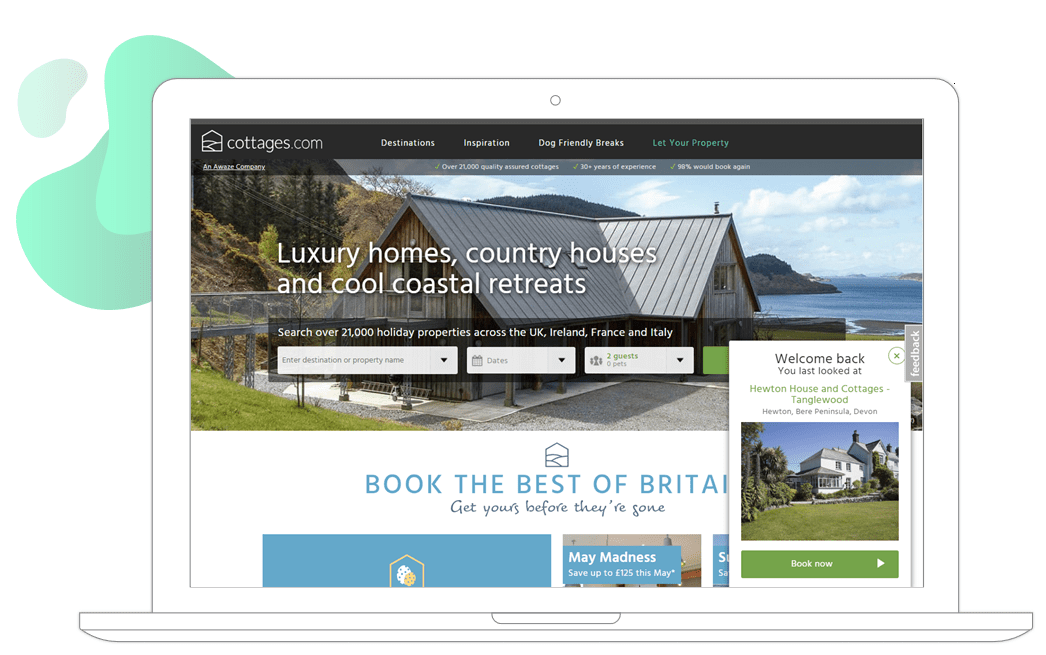
Source: Cottages.com
In addition to their welcome back popover, Cottages.com uses customers’ past browse and purchase data to tailor their homepage with personalized product recommendations, increasing their chances of moving the customer through to a product page by only showing them what they’re interested in.
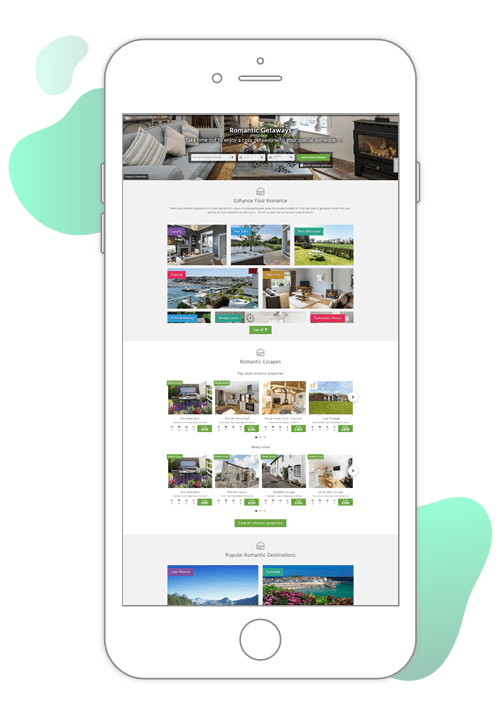
Source: Cottages.com
Give a helping hand to likely purchasers
The most common way to deal with cart abandonment is by sending a real-time email reminder. But you can also use website personalization to recover this lost revenue.
Wayfair features carted products on the homepage to encourage customers to check out. It’s important to include the main product details such as image and price, so the customer can quickly decide to complete the purchase.
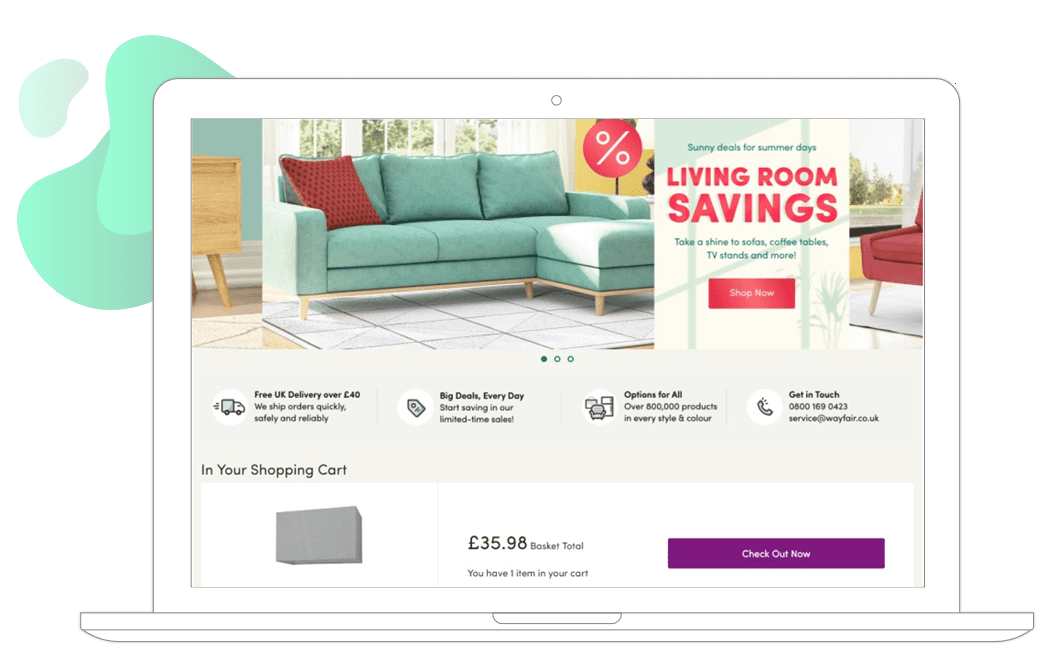
Source: wayfair.co.uk
4. Retain and re-engage existing customers
Retaining customers is often more cost-effective than acquiring them. By leveraging what you know about existing shoppers, you can deliver an individual customer experience that keeps them coming back for more.
Give customers more of what they want
Personalized banners grab customers’ attention with highly tailored content. When visitors are immediately presented with relevant information, they’re less likely to bounce. For example, you can show banners based on their favorite product category:
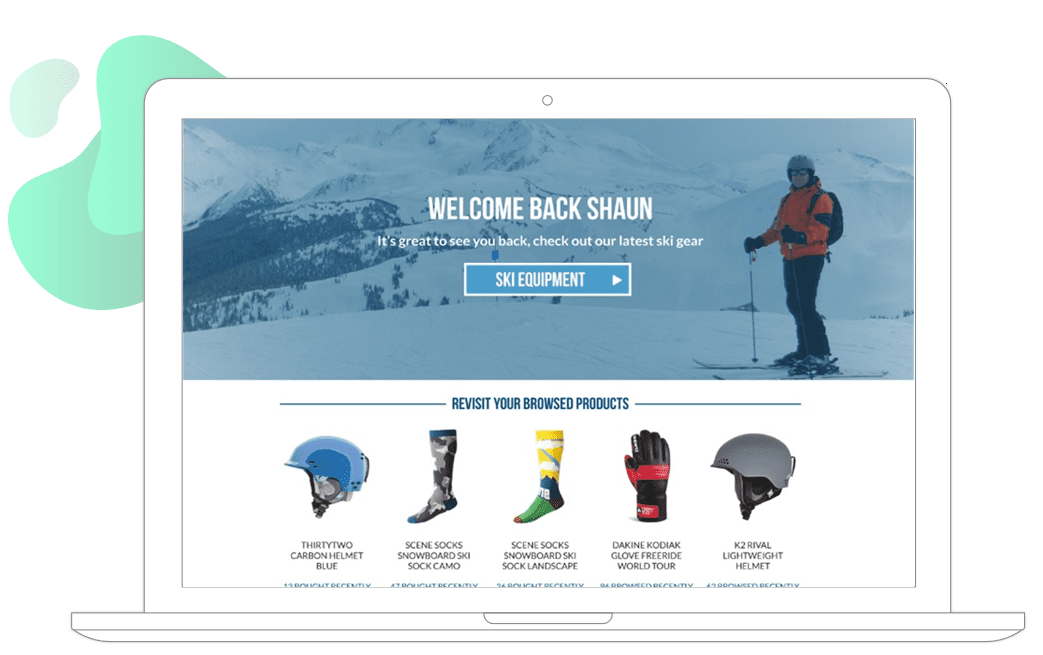
Zee & Co puts the spotlight on specific brands across their navigation bars as part of their eCommerce personalization strategy. Since customers tend to prefer brands or products they have seen multiple times, harness the power of familiarity for returning visitors by tailoring the brand suggestion to the customer’s most browsed or purchased brand.
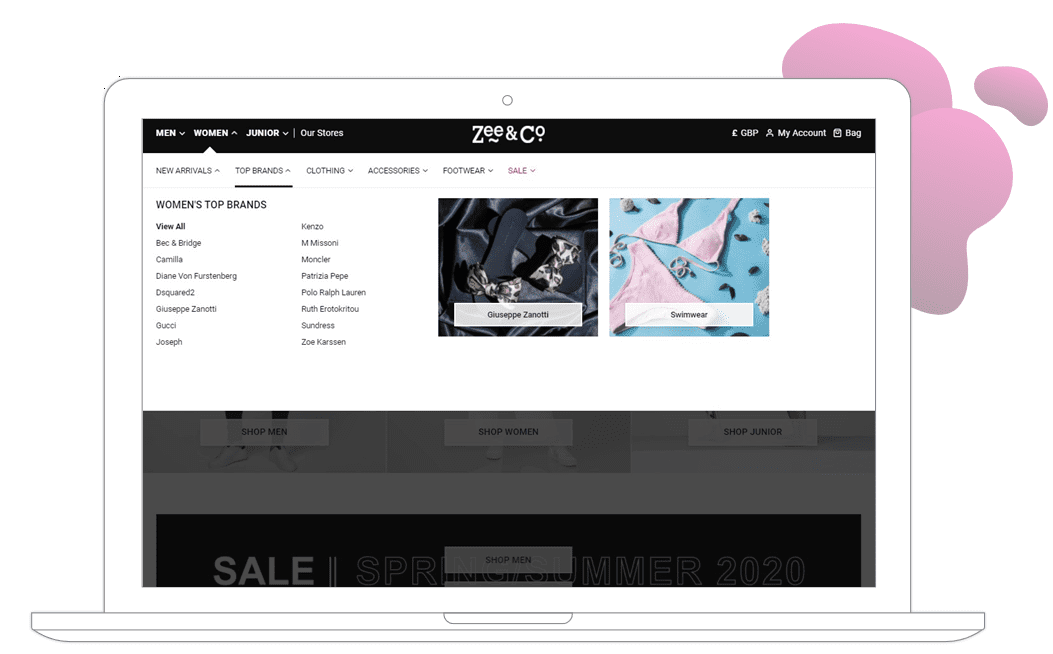
Source: zeeandco.co.uk
Learn more: 11 Exciting Examples of Navigation Bars with Dynamic Content
Customized images can also drive up-sells and cross-sells. Using data about the customer’s purchase history, you can predict what shoppers are likely to need – and when they will need it.
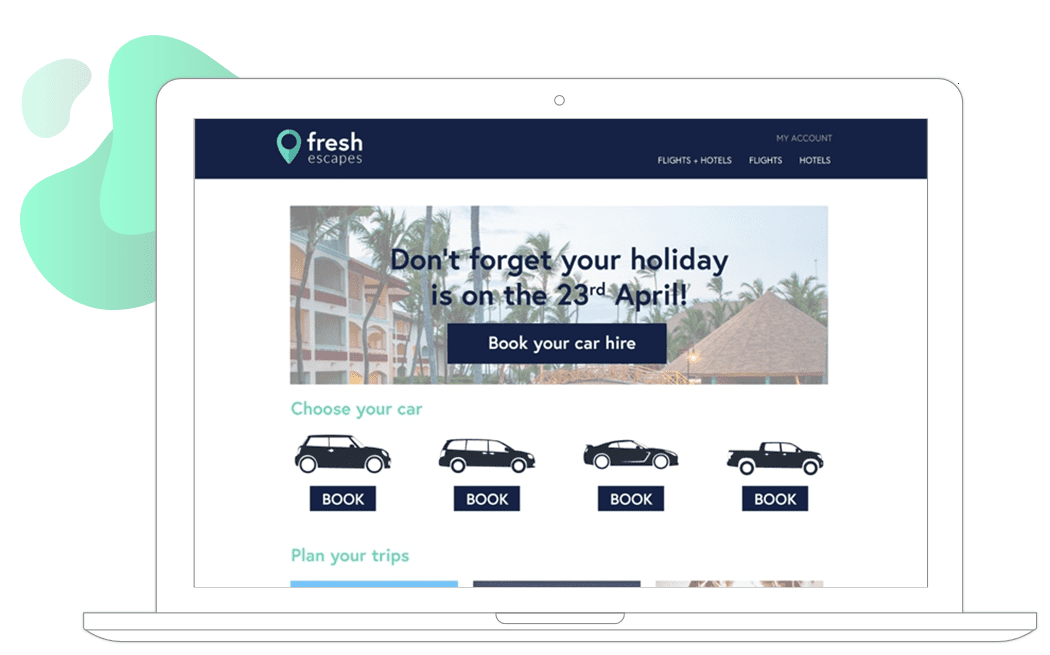
For shoppers who are very engaged but haven’t made a purchase for a while, you can use special offers and coupons to nudge them towards checking out.
Use dynamic countdown timers alongside coupons to encourage urgency.
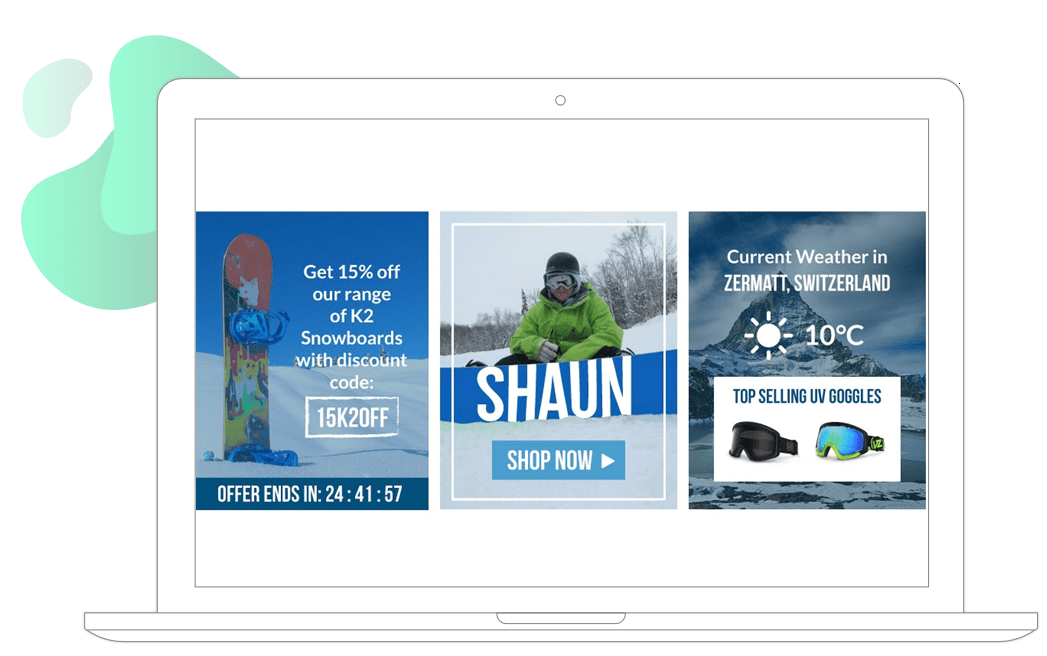
Take personalization to the next level
For a truly one-to-one customer experience, personalization should extend far beyond the homepage. Search pages, landing pages and product detail pages can all be customized to reflect each shopper’s interests and lifecycle stage.
Real-time emails based on customer behavior take personalization to the next level. Customers can be reminded about carted products, notified when their favorite items have dropped in price, and alerted when a product they missed out on comes back in stock.
Learn more about building customized experiences for retail customers in our dedicated guide.

